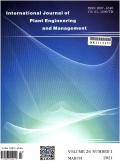Research on Nuclear Power Plant Safety Functional Requirements Analysis and Function Allocation
International Journal of Plant Engineering and Management
Pub Date : 2018-07-22
DOI:10.1115/ICONE26-82230
引用次数: 0
Abstract
This paper researched the safety functional requirements analysis and the allocation of functions between man and machine for the nuclear power plant. The safety functional requirements are identified from accident handling needs and refined from system configuration consideration. Through the analysis of design conditions, some safety features were extracted to mitigate accidents. Then, components (e.g. pumps, valves, tanks) were determined to implement each of the safety features at the system design stage. At this stage, some implicit safety features, which could not be obtained directly from the accident analysis, were added, according to the specific conditions of system configuration and operation. Finally, after further judgement on possible inconsistency, a complete list of safety functions for the nuclear power plant was formed. As an illustration, this paper provided a list of safety functions related to the safety injection function, and a list of equipment for the safety injection system. Furthermore, these identified safety functions, were appropriately allocated between man and machine, to be performed either by system components automatically, or by operators locally or remotely from the control room, or under the cooperation of operators and system components. Seven factors were considered in the allocation: a) performance requirements; b) the capability or limits of man and machine; c) existing practices; d) operating experience; e) management requirement; f) technical feasibility; g) cost. The allocation of functions for the safety injection system was validated using a simulator.核电厂安全功能需求分析与功能配置研究
本文对核电站的安全功能需求分析和人机功能分配进行了研究。安全功能需求是从事故处理需求中确定的,并从系统配置考虑中进行细化。通过对设计条件的分析,提取出一些安全特征,以减轻事故的发生。然后,在系统设计阶段确定组件(例如泵,阀门,储罐)以实现每个安全功能。在此阶段,根据系统配置和运行的具体情况,增加了一些不能直接从事故分析中获得的隐式安全特征。最后,在进一步判断可能的不一致之后,形成了一个完整的核电厂安全功能清单。为了说明这一点,本文给出了与安全喷射功能相关的安全功能列表,以及安全喷射系统的设备列表。此外,这些确定的安全功能在人和机器之间适当地分配,由系统组件自动执行,或由操作员在控制室本地或远程执行,或在操作员和系统组件的合作下执行。分配时考虑七个因素:a)性能要求;B)人与机器的能力或限制;C)现有做法;D)操作经验;E)管理要求;F)技术可行性;g)成本。使用模拟器验证了安全喷射系统的功能分配。
本文章由计算机程序翻译,如有差异,请以英文原文为准。
求助全文
约1分钟内获得全文
求助全文

 求助内容:
求助内容: 应助结果提醒方式:
应助结果提醒方式:


